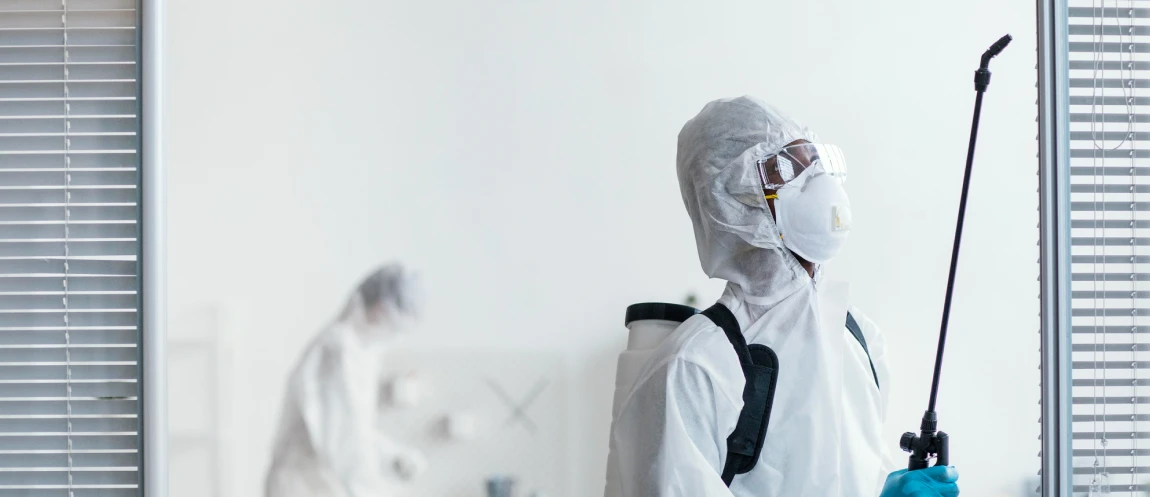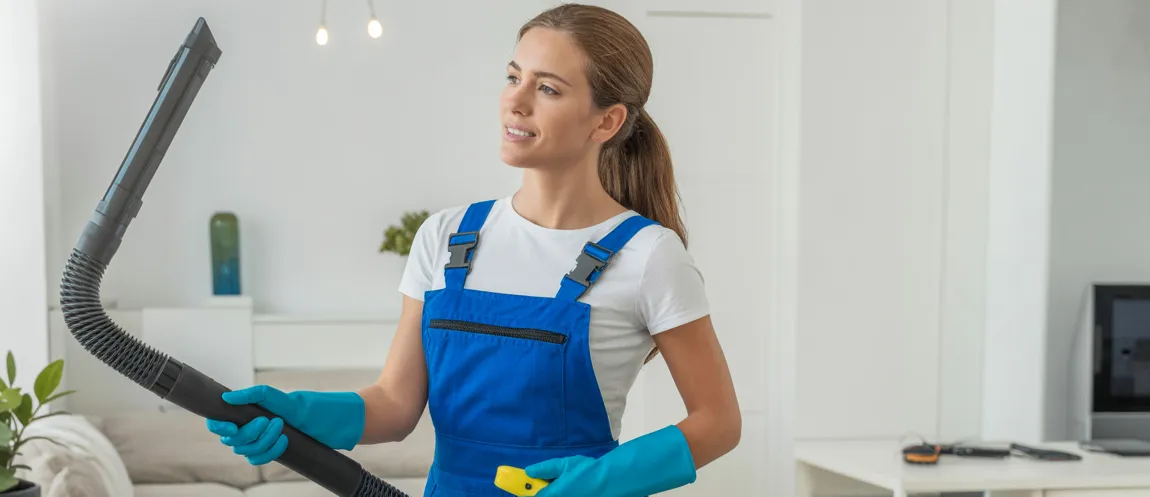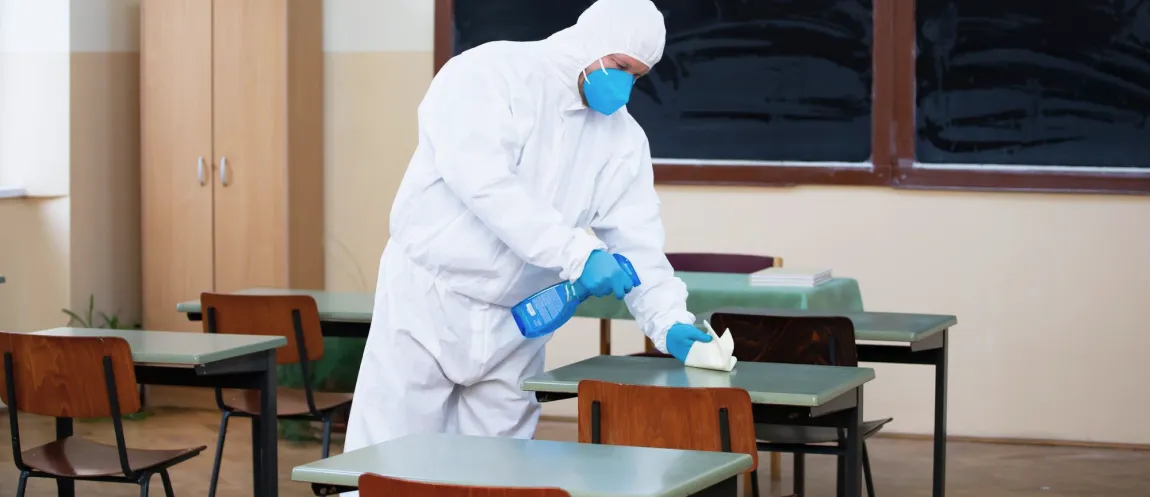This comprehensive guide explores professional disinfection services and their critical role in maintaining healthy environments. Learn the differences between cleaning, sanitizing, and disinfecting, understand when professional services are essential, and discover what to expect from expert disinfection providers.
Key Topics Covered:
- Cleaning vs. sanitizing vs. disinfecting definitions
- Professional disinfection process step-by-step
- High-touch surfaces and specialized area requirements
- Chemical types and advanced disinfection technologies
- Safety considerations and regulatory compliance
- Service provider selection criteria and certifications
Post-pandemic awareness has increased demand for professional disinfection services by 300%, as families and businesses recognize that standard cleaning alone cannot provide adequate protection against infectious diseases. Disinfection services eliminate harmful bacteria, viruses, and other pathogens from surfaces using EPA-approved chemicals and specialized equipment.
The connection between proper disinfection and health is clear. Regular professional disinfection reduces illness transmission by 85% in workplaces and can eliminate 99.9% of harmful pathogens when performed correctly.
If you’ve been wondering whether your current cleaning routine is truly protecting the people in your space, our DLL Cleaning Services experts can show you exactly what professional-grade disinfection reveals and how it improves your environment’s safety.
What is Disinfection?
Disinfection is the process of eliminating or reducing harmful microorganisms from surfaces and objects using chemical agents or physical methods. It kills bacteria, viruses, fungi, and other pathogens within a specified contact time. Professional disinfection services use hospital-grade products and proven methods that target pathogens at the cellular level, which standard household cleaners simply cannot achieve.
Key advantages include:
- Access to hospital-grade disinfectants that are not available to consumers
- Professional training in proper application techniques and safety protocols
- Systematic coverage ensures no areas are missed during treatment
- Documentation and certification for insurance and regulatory compliance
Targeting high-touch and hard-to-reach areas requires professional expertise. Hidden surfaces, ventilation systems, and frequently touched areas harbor the highest concentrations of harmful microorganisms.
Cleaning vs. Sanitizing vs. Disinfecting vs. Sterilizing
- Cleaning removes visible dirt and debris from surfaces but does not kill germs.
- Sanitizing reduces bacteria to safe levels as determined by public health standards.
- Disinfecting kills 99.9% of bacteria, viruses, and fungi on surfaces.
- Sterilizing eliminates all microorganisms, including spores.
Each process serves specific purposes:
- Cleaning prepares surfaces by removing organic matter that can harbor pathogens
- Sanitizing is appropriate for food-contact surfaces and areas with light contamination
- Disinfecting is essential after illness exposure or in high-risk environments
- Sterilizing is required only in medical settings and laboratory environments
When is each process needed?
Most homes and offices require cleaning followed by disinfecting for maximum protection. Sanitizing alone is insufficient for areas exposed to illness or high-traffic contamination.
How Disinfection Works?
Disinfection works by breaking down the cellular structure of pathogens through chemical action or physical processes like UV light. Different disinfectants target specific types of microorganisms, including bacteria, viruses, fungi, and bacterial spores.
Contact time is crucial for effectiveness. Most disinfectants require 30 seconds to 10 minutes of surface contact to achieve maximum pathogen elimination. Wiping disinfectant off immediately reduces its effectiveness significantly.
Proper application ensures success:
- The surface must be clean before disinfectant application
- Adequate product concentration according to the manufacturer’s instructions
- Complete coverage of all surfaces without missed spots
- Sufficient contact time before wiping or air drying
When to Consider Professional Disinfection Services?
Professional disinfection becomes essential after confirmed illness exposure, during outbreak situations, or when maintaining high-hygiene standards in sensitive environments. Many businesses schedule regular professional disinfection monthly or quarterly.
Immediate professional disinfection is recommended:
- Following confirmed COVID-19, flu, or other infectious disease exposure
- After a family member or employee’s illness recovery
- Before reopening after closure due to contamination concerns
- When immunocompromised individuals will be present
High-risk environments requiring regular service include:
- Medical offices, dental practices, and healthcare facilities
- Schools, daycare centers, and educational institutions
- Gyms, fitness centers, and recreational facilities
- Office buildings, retail stores, and restaurants
Step-by-Step Disinfection Process
Professional disinfection begins with thorough cleaning to remove organic matter that can shield pathogens from disinfectant contact. This preparation phase is critical for disinfection effectiveness.
Step 1: Initial Assessment and Preparation
Professionals evaluate the space to identify high-risk areas, select appropriate disinfectants, and plan the treatment sequence. They also ensure proper ventilation and occupant safety measures.
Step 2: Pre-Disinfection Cleaning
All surfaces receive thorough cleaning to remove dirt, debris, and organic matter. This step is essential because disinfectants cannot penetrate through the soil and contamination.
Step 3: Disinfectant Application
Professionals apply EPA-approved disinfectants using appropriate methods for each surface type. Application methods include spraying, fogging, and manual wiping, depending on area requirements.
Step 4: Contact Time Management
Disinfectants must remain on surfaces for specific contact times to achieve maximum effectiveness. Professional technicians monitor timing to ensure proper pathogen elimination.
Did You Know?
An average desk has 400 times more bacteria than a toilet seat, and your smartphone screen carries 10 times more bacteria than most public restroom surfaces. Professional disinfection addresses these hidden contamination sources that regular cleaning misses completely.
Common Disinfectants and Technologies Used
Professional services use various EPA-approved disinfectants depending on surface types, pathogen targets, and safety requirements. Each disinfectant type offers specific advantages for different applications.
Primary chemical disinfectants include:
- Alcohol-based solutions (70% isopropyl) for quick-drying surface treatment
- Hydrogen peroxide formulations for broad-spectrum pathogen elimination
- Quaternary ammonium compounds for long-lasting antimicrobial protection
- Chlorine-based products for high-level disinfection in healthcare settings
Advanced disinfection technologies:
- Electrostatic sprayers ensure complete surface coverage, including vertical and hidden areas
- UV-C light systems provide chemical-free disinfection for sensitive environments
- Fogging systems distribute disinfectant aerosols for large area treatment
- HEPA filtration systems remove airborne pathogens during treatment
Safety and efficacy considerations guide product selection based on occupancy patterns, surface materials, and specific pathogen concerns in each environment.
Disinfection Checklists for Your Home or Workplace
High-Touch Surfaces and Priority Areas
Professional disinfection focuses on surfaces that receive frequent human contact and areas where pathogens accumulate most readily. These high-touch surfaces require daily or weekly professional attention depending on usage patterns.
Essential high-touch surfaces include:
- Door handles, knobs, and push plates throughout the facility
- Light switches, elevator buttons, and electrical controls
- Handrails, guardrails, and stair bannisters
- Phones, tablets, keyboards, and shared electronic devices
- Desks, chairs, and frequently used furniture surfaces
Critical facility areas requiring professional disinfection:
- Restrooms, including fixtures, partitions, and dispensers
- Kitchen and break room surfaces, appliances, and dining areas
- Reception areas, waiting rooms, and customer service counters
- Meeting rooms, conference tables, and presentation equipment
You might be shocked by what our DLL Cleaning Services team discovers in spaces that look perfectly clean. The hidden contamination sources we find tell a story that most people never want to hear, but need to know.
Want to learn what’s really lurking in your facility?
Specialized Areas
Different environments require customized disinfection approaches based on specific contamination risks and regulatory requirements. Professional services adapt their methods and products for each specialized setting.
Medical and childcare settings require:
- Toys, play equipment, and learning materials disinfection
- Cribs, changing tables, and sleep area treatment
- Medical equipment and examination room sanitization
- Waiting areas and family consultation spaces
Fitness and recreational facilities need:
- Exercise equipment, mats, and weights disinfection
- Locker rooms, showers, and changing areas treatment
- Pool areas, saunas, and wellness facility sanitization
- Group fitness rooms and sports equipment cleaning
Office and commercial spaces focus on:
- Individual workstations, shared computers, and printers
- Conference rooms, training facilities, and presentation equipment
- Common areas, lobbies, and customer interaction zones
- Food preparation areas, vending machines, and dining spaces
How to Choose the Right Professional Disinfection Service Provider?
Selecting qualified disinfection service providers ensures effective treatment and regulatory compliance. Look for companies with proper certifications, insurance coverage, and transparent service protocols.
Essential provider qualifications include:
- EPA registration and adherence to CDC disinfection guidelines
- Liability insurance and worker compensation coverage
- Training certifications in chemical handling and safety protocols
- OSHA compliance for worker protection and environmental safety
Service quality indicators:
- Use of EPA-approved disinfectants appropriate for your environment
- Proper personal protective equipment (PPE) for all technicians
- Detailed service documentation and treatment verification
- Customized treatment plans based on facility assessment
Transparency and communication separate professional providers from basic cleaning services. Quality providers explain their processes, provide material safety data sheets, and offer service guarantees.
Pro-Tip:
When choosing a provider, ask for references and insurance certificates. If they hesitate, that’s your red flag. You deserve detailed reports showing exactly what was treated and contact times achieved. Don’t settle for companies that just make surfaces look clean. You need actual pathogen elimination, like DLL Cleaning Services.
Safety, Regulations, and Environmental Considerations
Professional disinfection services must comply with federal, state, and local regulations governing chemical use, worker safety, and environmental protection. These standards ensure safe and effective treatment for all occupants.
Regulatory oversight includes:
- CDC guidelines for disinfection procedures and product selection
- EPA registration requirements for all antimicrobial products used
- OSHA standards for worker protection and chemical handling safety
- State and local health department specifications for specific facilities
Chemical safety protocols protect occupants:
- Proper ventilation during and after disinfectant application
- Appropriate personal protective equipment for all service technicians
- Safe storage and disposal of disinfectant products and contaminated materials
- Clear communication about re-entry times and safety precautions
Eco-friendly options are available for environmentally conscious facilities. Many EPA-approved disinfectants use plant-based ingredients and biodegradable formulations without compromising effectiveness.
Maintenance and Long-Term Benefits of Disinfection
Regular professional disinfection creates cumulative health benefits and can reduce overall cleaning costs through preventive pathogen control. Most facilities benefit from monthly or quarterly professional disinfection supplemented by daily cleaning protocols.
Long-term health benefits include:
- Reduced illness transmission rates among occupants
- Lower healthcare costs due to fewer sick days and medical claims
- Improved indoor air quality through the elimination of microbial contamination
- Enhanced reputation for health and safety standards
Economic advantages:
- Reduced liability exposure from illness-related claims
- Lower insurance premiums for facilities with documented disinfection programs
- Increased productivity due to healthier work environments
- Extended the equipment and furnishings’ lifespan through proper maintenance
Creating sustainable programs involves combining professional disinfection with daily cleaning protocols and staff training on contamination prevention.
Bottom Line
Professional disinfection services provide essential protection against harmful pathogens that regular cleaning cannot eliminate. Regular professional disinfection creates healthier environments, reduces illness transmission, and provides peace of mind that comes from knowing your space receives proper pathogen control.
When it comes to protecting the people you care about most, DLL Cleaning Services understands that surface-level cleaning isn’t enough anymore. We know that choosing a disinfection service means trusting professionals in your most important spaces. That’s why our certified technicians approach every job with the care and attention we’d want in our own homes and businesses.
Stop worrying about invisible threats lurking on your surfaces and start enjoying the confidence that comes with professional-grade protection. Contact our experts at DLL Cleaning Services and discover what real disinfection can do for you!
FAQs
1. What is the difference between cleaning, sanitizing, and disinfecting?
Cleaning removes visible dirt and debris, sanitizing reduces bacteria to safe levels, and disinfecting kills 99.9% of bacteria, viruses, and fungi. Each serves different purposes in maintaining healthy environments.
2. How long does it take to disinfect a space, and when can I re-enter after service?
Professional disinfection typically takes 1-3 hours, depending on the space size. Re-entry is usually safe after 30 minutes to 2 hours, depending on the products used and ventilation. Providers specify exact timing.
3. What methods and products do professional disinfection services use?
Professional services use EPA-approved disinfectants, including alcohol, hydrogen peroxide, and quaternary ammonium compounds. Application methods include electrostatic spraying, fogging, and manual wiping with commercial-grade equipment for complete coverage.
4. Are disinfection services safe for children, pets, and sensitive individuals?
Yes, when performed by certified professionals using EPA-approved products. Many services offer eco-friendly, low-toxicity options. Proper ventilation and re-entry timing ensure safety for all occupants, including sensitive individuals.



